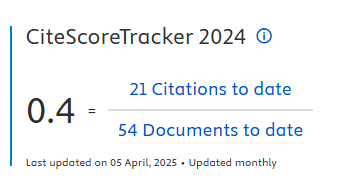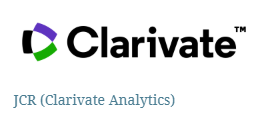Social capital and online social networks from a gender perspective: a study with information technology managers
DOI:
https://doi.org/10.5585/iji.v10i2.21347Keywords:
Online social networks, Information technology, Social capital, Managers, Sorority.Abstract
Objective: This paper seeks to understand how social capital is developed by IT professionals in the use of Online Social Networks (OSN) and verifies the issue of gender.
Methodology: The research uses a basic qualitative approach, with semi-structured interviews with 12 IT managers working in the “S” System in Brazil. As a method of data analysis, Yin's (2016) five-phase cycle was used, through previous categories, but also it comprised an inductive process through the emergence of new categories.
Originality: A research gap was detected regarding the impact of these networks on the work of managers, especially those working in the Information Technology (IT) area, in addition to their relationship with gender.
Main results: It was verified that the OSN impacts the daily life of the managers, allowing the creation of groups that generate the social capital of bridge and connection. Through bridging social capital, OSNs streamline communication, problem-solving, and decision-making. As for bonding social capital, managers have access to scarce resources and support, especially when it comes to women from IT, who come together to strengthen themselves (sorority).
Theoretical contributions: This work contributed to the enrichment in the field of social capital, identifying new benefits such as support in decision-making and sorority.
Practical Contributions: The “S” System should use these networks as a strategic resource so that both the organization and the employee’s benefit.
Downloads
References
Ahmad, S., Mustafa, M., & Ullah, A. (2016). Association of demographics, motives and intensity of using Social Networking Sites with the formation of bonding and bridging social capital in Pakistan. Computers in Human Behavior, 57, 107-114. https://doi.org/10.1016/j.chb.2015.12.027
Ahuja, M. K. (2002). Women in the information technology profession: a literature review, synthesis and research agenda. European Journal of Information Systems, 11(1), 20–34. https://doi.org/10.1057/palgrave.ejis.3000417
Albertin, A. et al. (2005). Tecnologia de Informação: desafios da tecnologia de informação aplicada aos negócios. São Paulo: Atlas.
Aten, K., Direnzo, M., & Shatnawi, D. (2017) Gender and professional e-networks: Implications of gender heterophily on job search facilitation and outcomes. Computers in Human Behavior, 72, 470–478.
Ben, E. (2007). Defining expertise in software development while doing gender. Gender, Word and Organization, 14(4), p. 312-332. https://doi.org/10.1111/j.1468-0432.2007.00346.x
Benson, V., Hand, C., & Hartshorne, R. (2018). How compulsive use of social media affects performance: insights from the UK by purpose of use. Behaviour & Information Technology.
Bourdieu, P. (1986). The forms of capital. In: RICHARDSON, J.G. Handbook of theory and research for the sociology of education. New York: Greenwood Press.
Burt, R. (2001) Structural Holes versus Network Closure as Social Capital. In: Social capital: theory and research. Edited by Nan Lin, Karen Cook, Ronald S. Burt. New York, Aldine de Gruyter.
Coleman, J. S. (1988). Social capital in the creation of human capital. American Journal of Sociology, 94, S95–S121.
Coleman, J. S. (2000). Social capital in the creation of human capital. In: LESSER, E. L. Knowledge and social capital: foundations and applications. Boston: Butterworth & Heinemann, p.17-42.
Constant, D., Sproull, L., & Kiesler, S. (1996). The kindness of strangers: The usefulness of electronic weak ties for technical advice. Organization Science, 7(2), p.119–135. https://doi.org/10.1287/orsc.7.2.119
Donelan, H. (2016). Social media for professional development and networking opportunities in academia, Journal of Further and Higher Education, 40(5), p. 706-729. https://doi.org/10.1080/0309877X.2015.1014321
Flick, U. (2009). Introdução a pesquisa qualitativa. 3.ed. Porto Alegre: Artmed.
Friedkin, N. (1982). Information flow through strong and weak ties in inter-organizational social networks. Social Networks, 3(4), 273–285. https://doi.org/10.1016/0378-8733(82)90003-X
Friese, S. (2014). ATLAS.ti 7: user manual [Manual]. Berlim: Scientific Software Development GmbH.
Fryxell, G.E., & Lerner, L.D. (1989). Contrasting corporate profiles: Women and minority representation in top management positions. J Bus Ethics, 8, p. 341-352. https://doi.org/10.1007/BF00381725
Gallos, J. (1989). Exploring womens’ development: implications for career theory, practice, and research. In Handbook of Career Theory (Arthur MB, Hall DT and Lawrence BS, Eds), p. 110-132.
Gibbs, G. (2009) Análise de Dados Qualitativos. Coleção Pesquisa Qualitativa. Porto Alegre: Artmed.
Granovetter, M. S. (1973). The strength of weak ties. American journal of sociology, 78(6), p. 1360-1380.
Grottke, M., Hacker, J., & Durst, C. (2018). Which factors determine our online social capital? An analysis based on structural equation modelling. Australasian Journal of Information Systems, 22.
Hanusch, O.; & Bruns, A. (2016). Journalistic Branding on Twitter: A representative study of Australian journalists’ profile descriptions. Digital journalism, 5(1), 26-43. https://doi.org/10.1080/21670811.2016.1152161
Hanzel, T. et al. (2017). #DocsOnTwitter: How Physicians use Social Media to Build Social Capital. Hospital Topics. 96(1), 9-17. https://doi.org/10.1080/00185868.2017.1354558
Haythornthwaite, C. (2002). Strong, weak, and latent ties and the impact of new media. The Information Society, 18(5), p. 385-401. https://doi.org/10.1080/01972240290108195
International Labour Organization [ILO]. (2015). Women and Business Management: gaining momentum/ Inter-national Labour Office. Geneva: ILO, 2015.
Jurkevičienė, J., & Butkevičienė, E. (2018). Social capital in social media networks. Filosofija, Sociologija, 29(2), p. 99-106.
Krackhardt, D. (1992). The strength of strong ties: The importance of philos in organizations. InN. Nohria & R. G. Eccles (Eds.), Networks and organizations: Structure, form, and action. Boston: Harvard Business School Press.
Lorenzo-romero, C., & Alarcon-del-amo, M. (2012). “Segmentation of Users of Social Networking Websites.” Social Behaviour and Personality, 40(3), p. 401-414. https://doi.org/10.2224/sbp.2012.40.3.401
Maares, P., Lind, F., & Greussing, E. (2021). Showing off Your Social Capital: Homophily of Professional Reputation and Gender in Journalistic Networks on Twitter. Digital Journalism 9(4), p. 500-517.
Mishra, S., & Tyagi, A. (2013). Perception towards professional and personal social networking sites: an exploratory study. Int. J. Business Excellence, 6(4).
Myers, M. D. (2013). Qualitative Research in Business & Management. Sage.
Nunes, J. (2016). Gênero e raça no trabalho em tecnologia da informação (TI). Ciências Sociais Unisinos, São Leopoldo, v. 52, n. 3, p. 383-395. https://doi.org/10.4013/csu.2016.52.3.09
Pickering, J., & King, J. (1995). Hardwiring weak ties: Interorganizational computer-mediated communication, occupational communities, and organizational change. Organization Science, 6(4), p. 479–486. https://doi.org/10.1287/orsc.6.4.479
Primo, A. (2000) Interação mútua e reativa: uma proposta de estudo. Revista da Famecos, 12(81-92). https://doi.org/10.15448/1980-3729.2000.12.3068
Putnam, R. D. (2000). Bowling alone: the collapse and revival of american community. Nova Iorque: Simon & Schuster.
Ragins, B., & Cotton, J. (1991). Easier said than done: gender differences in perceived barriers to gaining a mentor. Academy of Management Journal, 34, p. 939–951. https://doi.org/10.5465/256398
Recuero, R., & Zago, G. (2009). Em Busca das Redes que Importam. Líbero, (24), p.81-94.
Recuero, R. (2012). O capital social em rede: como as redes sociais na internet estão gerando novas formas de capital social. Contemporânea, 10(3), p.597-617.
Servino, S.; Neiva, E., & Campos, R. (2013). Estresse ocupacional e estratégias de enfrentamento entre profissionais de tecnologia da informação. Gerais: Revista Interinstitucional de Psicologia, Belo Horizonte, 6 (2), p. 238-254.
Singh, V.K., & Ghosh, I. (2017). Inferring individual social capital automatically via phone logs. Proceedings of the ACM on Human-Computer Interaction, 1(CSCW),95.
Smith, C., Smith, J. B., & Shaw, E. (2017) Embracing digital networks: Entrepreneurs' social capital on-line. Journal of Business Venturing, 32(1), p. 18-34. https://doi.org/10.1016/j.jbusvent.2016.10.003
Smith-lovin, L., & Mcpherson, J. (1993). You are who you know: a network approach to gender. In Theory on Gender/Feminism on Theory. Aldine De Gruyter, New York.
Tiwari, S., Lane, M., & Alam, K. (2019). Do social networking sites build and maintain social capital on-line in rural communities?. Journal of Rural Studies, 66, 1-10. https://doi.org/10.1016/j.jrurstud.2019.01.029
Van Velsor, R., & Hughes, M. (1990) Gender differences in the development of managers: how managers learn from experience. Center for Creative Leadership, Greensboro, NC.
Wellman, B. et al. (1996). Computer networks as social networks: Collaborative work, telework, and virtual community. Annual Review of Sociology, 22, p. 213–238. https://doi.org/10.1146/annurev.soc.22.1.213
Williams, J. R. (2006). On and off the ‘net: Scales for social capital in an on-line era. Journal of Mediated Communication, 11(2), art. 11. https://doi.org/10.1111/j.1083-6101.2006.00029.x
Williams, J. R. (2019). The use of on-line social networking sites to nurture and cultivate bonding social capital: A systematic review of the literature from 1997 to 2018. New Media & Society, 21 (11-12), p. 2710-2729. https://doi.org/10.1177/1461444819858749
Wu, L., & Kane, G. (2021). Network-biased technical change: How modern digital collaboration tools overcome some biases but exacerbate others. Organization Science 32(2), p. 273-292.
Yen, Y.-S.; Chen, M.-C.; Su, C.-H. (2020) Social capital affects job performance through social media. Industrial Management & Data Systems, 120(5), p. 903-922, 2020. https://doi.org/10.1108/IMDS-09-2019-0473
Yin, R. K. (2016). Pesquisa qualitativa do início ao fim. Porto Alegre: Penso.
Downloads
Published
How to Cite
Issue
Section
License
Copyright (c) 2022 Mariane Araújo de Oliveira, Anatalia Saraiva Martins Ramos, João Paulo Oliveira Lucena

This work is licensed under a Creative Commons Attribution-NonCommercial-ShareAlike 4.0 International License.
- Abstract 671
- PDF 487











